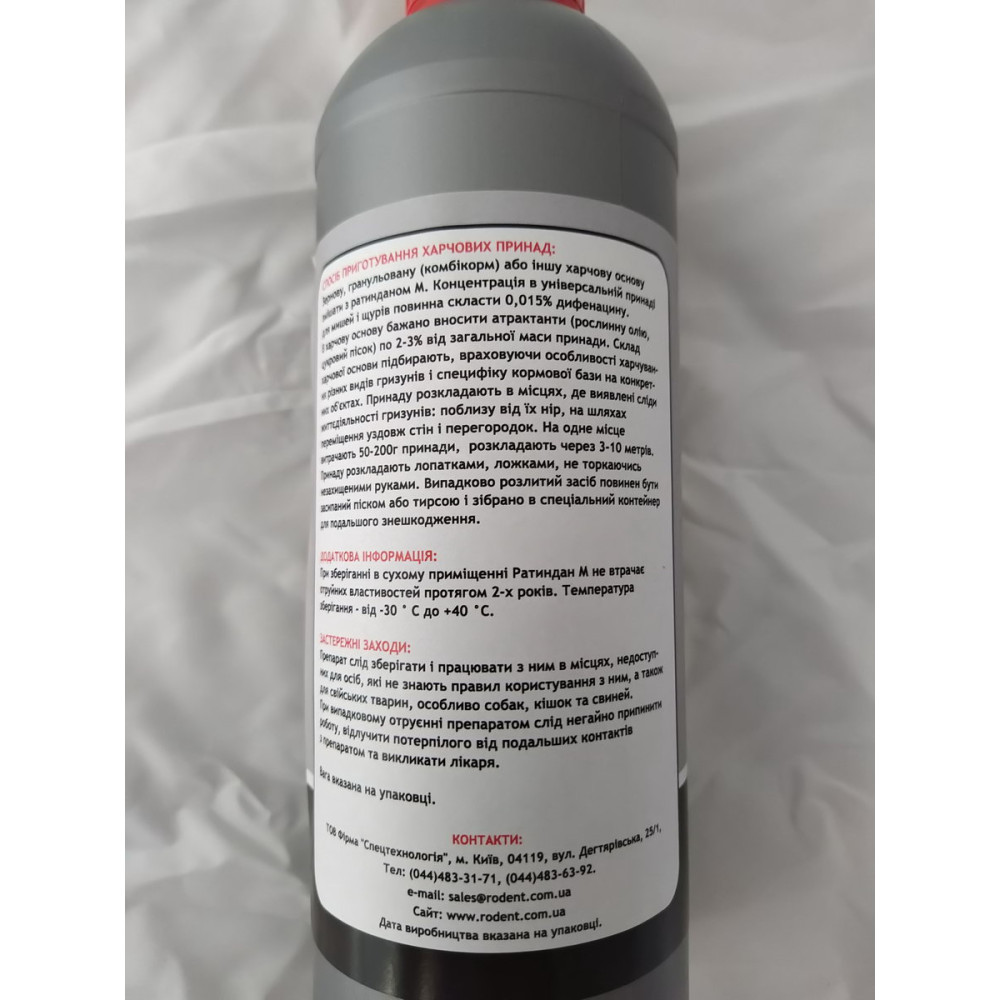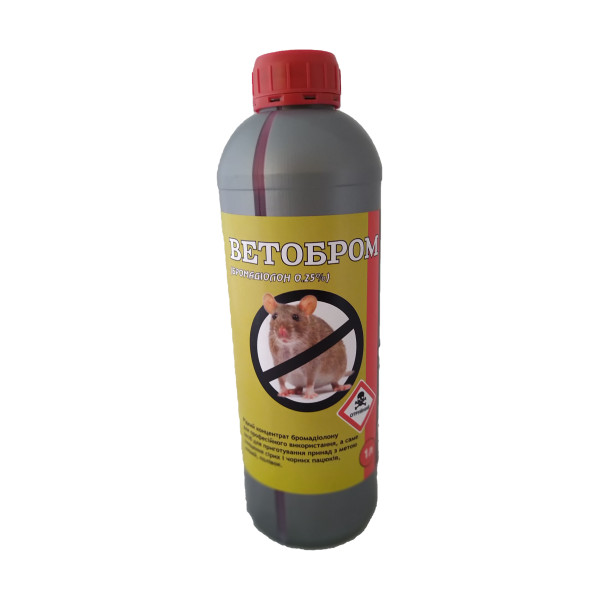Ваш кошик порожній :(
Ратиндан - М, концентрат для виготовлення принад, дифенацин 0,5%
- Вага: 1 л
- Наявність: В наявності
Діюча речовина: Маслянний розчин дифенацином (0,5%).
Розфасовка: 1 та 5 л.
Призначення: Приготування приманок для знищення гризунів. Засіб призначений для організацій, що виготовляють на його основі родентицидні приманки та для організацій, що виконують дератизаційні роботи.
Приготування приманки:
Для приготування харчових отруєних приманок слід використовувати зернову, гранульовану або іншу харову основу. Ступінь поїдання отруєних приманок залежить від привабливості харчових продуктів, які були взяті для приготування приманок, кулінарної обробки та зовнішнього виду принад та особливо ступеню маскування отрути у харчовій основі. Гризуни охоче поїдають житній та пшеничний хліб, різні крупи, борошно пшеничне, вівсяне, горохове та житнє, сирі та варені овочі, м’ясний та рибний фарш. Гризуни уникають зіпсованої, прокислої або цвілої їжі. Пацюки завжди віддають перевагу принадам з достатнім вмістом вологи. Для більшої принадності харчових принад їх рекомендується присмачувати невеликою кількістю солі, цукру, жиру. Зовнішній вигляд приманок повинен бути таким самим, як і звичайна їжа, що зустрічається гризунам.
Для приготування одного кг. отрутної принади треба використати 30 мл. препарату та 970 грам кормової основи, тобто з 1 кг. препарата виходить 33 кг. готової принади.
Цієї кількості достатньо для обробки 1000-3000 м2, в залежності від ступеню заселеності об’єкта гризунами.
При цьому треба враховувати, що пацюки та миші мають різну стійкість до отрут, і крім того, при однократному прийомі їжі пацюки з’їдають отрути більше, чим миші.
Використання приманки:
Приманка розміщується поблизу заселених нір і в місцях, де з’являються гризуни. Кількість принад залежить від компактності популяції гризунів – в середньому по 200-300 грам в кожну приманочну точку. Кількість останніх залежить від ступеню заселеності об’єкта гризунами і може становити від 1 до 5 точок на 100 м2. Принаду належить час від часу перевіряти та добавляти свіжу принаду до припинення поїдання.
Отруєна принада повинна бути розкладена в достатній кількості на протязі всього періоду дератизаційних заходів. Найкраще препарат діє при поїданні принади невеликими порціями протягом 4¸5 днів. Якщо принада залишилась недоторканою на протязі 3-х днів – спробуйте підшукати більш придатне місце. Рекомендується застосовувати одночасно 2¸3 види принад.
Після проведення дератизаційних заходів невелику кількість принади у профілактичних цілях розкладають у місцях, де можлива поява пацюків та мишей.
Спосіб дії: дифенацин - отрута антикоагулянтної дії. При попаданні в організм тварини цей препарат уповільнює згортання крові, а також підвищує проникність периферійних кровоносних судин, що як наслідок, призводить до крововиливів. Дифенацин має різко виражені кумулятивні властивості (накопичується в організмі), тому прийом декількох невеликих доз протягом ряду днів забезпечує загибель гризунів. Внаслідок уповільненої дії препарату щури і миші не розпізнають отрути в приманці, що підвищує ефективність боротьби з шкідливими гризунами.




